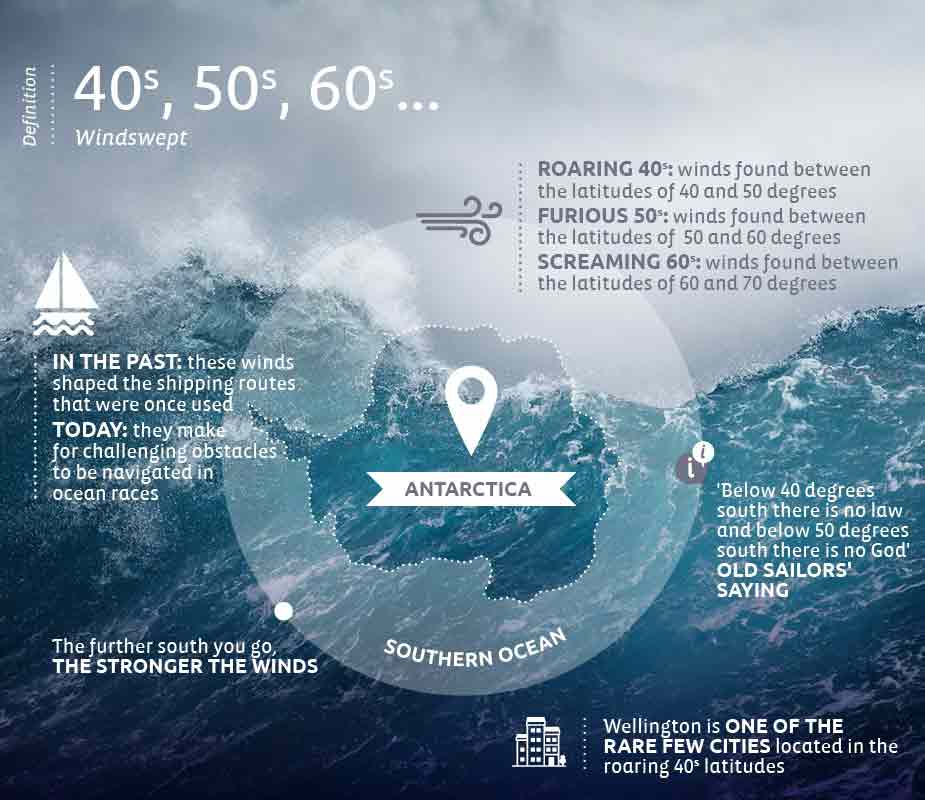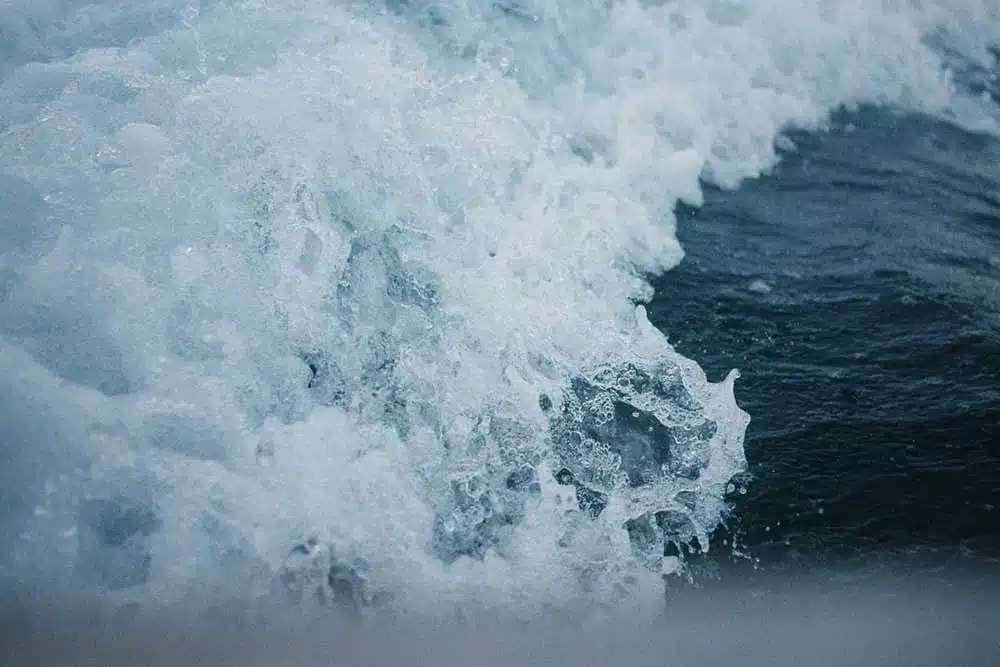Windswept
The zephyr, mistral, sirocco, autan… All conjuring to mind the image of bodies braced against the gale and hands straining to keep hats on heads. Other winds sweep over the Southern Ocean, known as the Roaring 40s, Furious 50s and Screaming 60s. To find out more, let us set sail for a voyage deep into the Southern Hemisphere
Roaring, furious and screaming: what gives?
The Roaring 40s, Furious 50s and Screaming 60s are winds that batter the Southern Ocean, on the fringes of Antarctica. Their names are nods to the latitudes at which they occur in the Southern Hemisphere, and are terrifying in the intensity they evoke. And with just cause: long feared for the devastation they could wreak, their very existence shaped the shipping routes used by the boats that sailed these waters.

Gone with the wind
These winds were first discovered by curious sailors who dared to venture into these stormy seas. Dutch sailor Hendrik Brouwer, was the first to discover that harnessing the power of the Roaring 40s could help him cross the Indian Ocean more quickly, allowing him to reach Java in South Africa in record times. It was a hazardous gamble for a 17th-century seafarer, but it paid off: crossing times were drastically cut as a result.
Natural phenomena
These westerly winds have less land mass to slow them down, as beyond a certain point, dry land becomes a rarity. The difference in temperature between the Antarctic ice and water creates turbulence, which in turn results in intense depressions. The winds range from 15 to 25 knots, reaching speeds that can be dangerous for skippers. Extreme weather conditions add to the danger, with waves regularly reaching heights of 10 metres at these latitudes. Wellington, the capital of New Zealand, is one of the rare few cities to be located between these latitudes. Nicknamed Windy Welly, the city is indeed incredibly windswept, with gusts averaging around 70 knots.
Mystical, inspiring wind
Although formidable, these areas fascinate sailors. These winds shaped the shipping routes that were once used, and today they make for challenging obstacles to be navigated in ocean races. For Cape Horners and Albatrosses, the ships and captains that have sailed around Cape Horn, this part of the world is a gigantic open-air playground in which they thrive, despite the gales. Many French sailors risk their lives to experience these maritime adventures, particularly during the Vendée Globe.
Film-makers have been inspired by the phenomenon too, as illustrated by The Roaring Forties by Christian de Chalonge, a film inspired by Englishman Donald Crowhurst, in which a sailor sets sail on a thrilling, single-handed round-the-world race…



